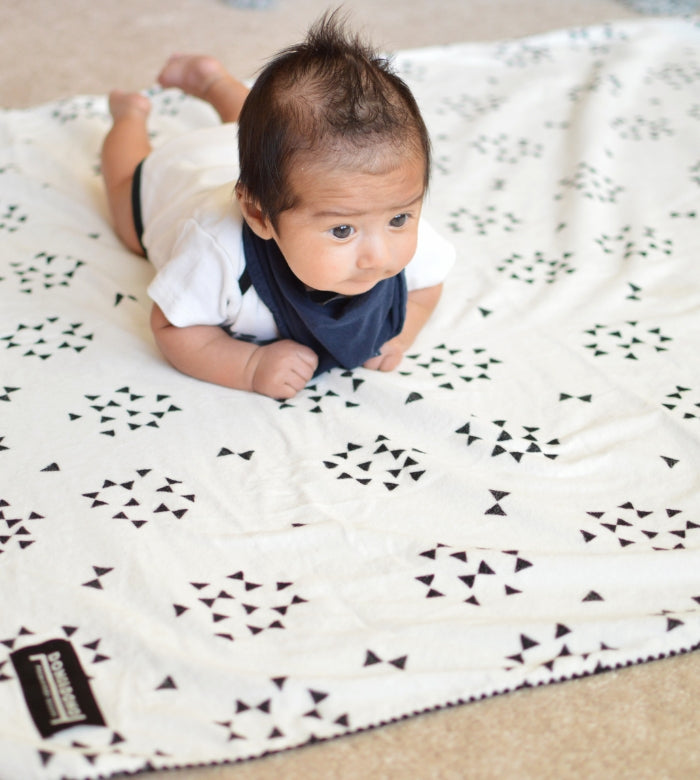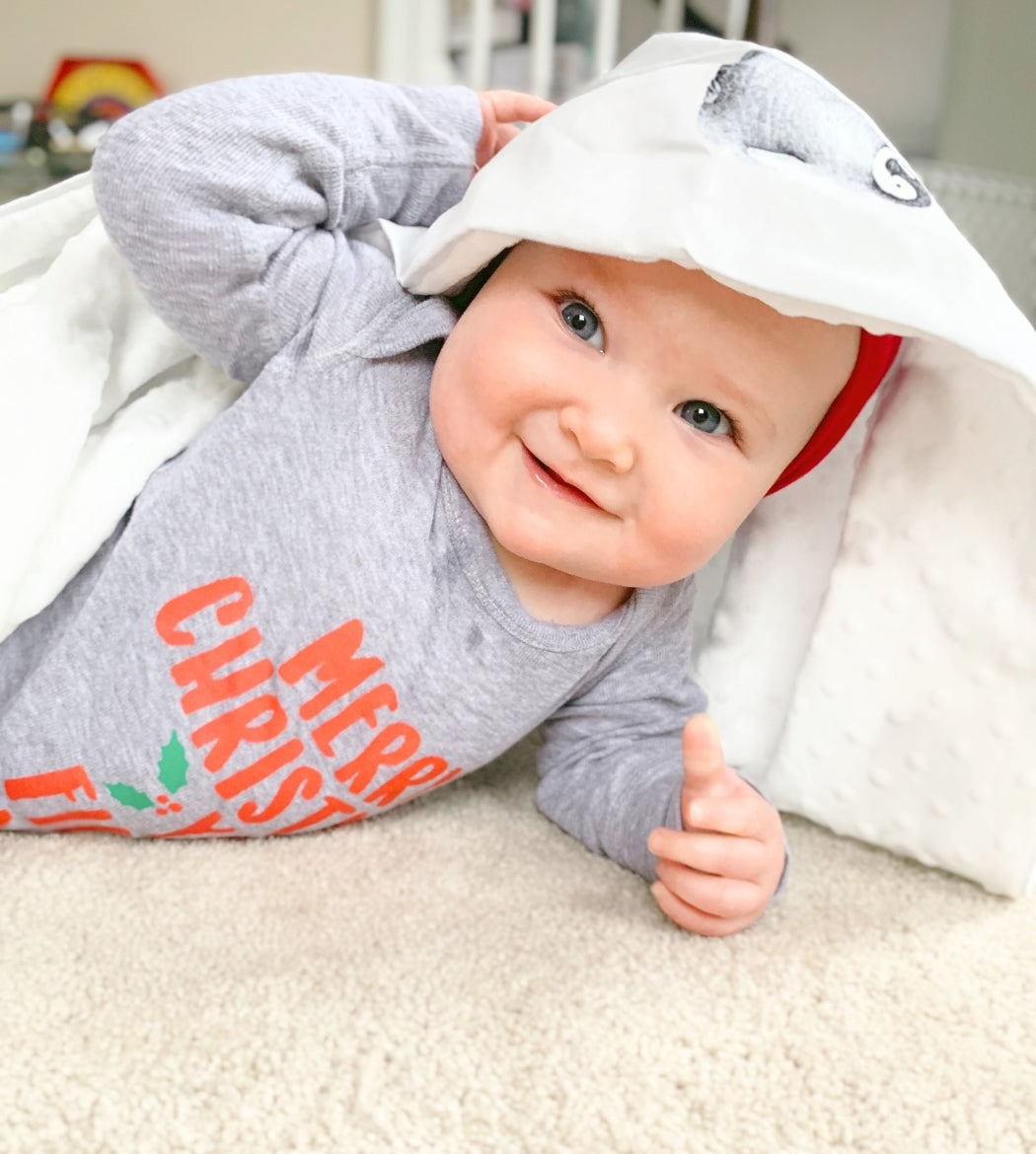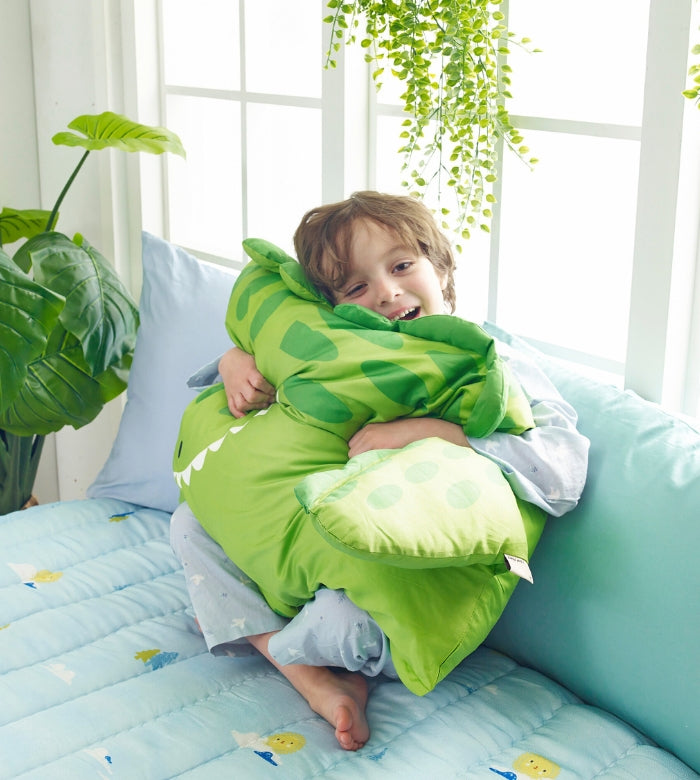Teething? We Answered Your FAQ's!
Teething is one of the most challenging parts of a baby’s life. It can also be challenging as their Mother to watch our babies in pain, sleeping poorly, and being generally uncomfortable. We rounded up a few of our favorite teething questions to compile them all in one place for you. Keep reading to learn more about teething, symptoms, and how you can help your little one, including how to give them the best possible chance for oral development during this time.What are the Signs and Symptoms?

Wondering if your little one is gearing up for their first tooth to pop out?
Here are some tell-tale signs:
- Swollen, very red gums
- Sudden impulse to want to chew on everything, including their fist
- Drool, drool, and more drool
- Pulling their ear
- Rubbing their cheek
- Changes in eating habits
- Changes in sleep patterns
- Fussiness and crankiness
Your baby could display symptoms for up to two months before any teeth actually pop through. So, if you’re experiencing some or all of these, but there is still no tooth popping through, it may still take some time!
When Does Teething Hurt The Most?
Teething pain is different for every baby who experiences it and for every tooth that pops through. Some areas may be more sensitive than others. Some babies may get more fussy than others, and some babies may handle it like champs.
A good rule of thumb to note is that teething pain is usually gone once the tooth has erupted. If your baby has been cranky and going through a tough time, just know that they will be back to their normal selves shortly after you can see their new pearly whites. Teething pain is usually the worst in the days before the eruption, so if you notice a sudden uptick in symptoms, it may be likely that the tooth is about to pop out.

When Does Teething Begin and End?
Teething can begin anytime within the first year. Some babies may start teething as early as 2-3 months, and some may still have a gummy smile at 9 or 10 months. On average, teething usually begins around six months. Your baby may teethe slowly, or there could be many that pop out at once. It all depends, as every baby is different!
Most of your baby’s teeth will come in within the first year or so, including their one-year molars. You may get a little bit of a break, but then, the two-year molars will strike! It could take up to a year for those to finally come in. All in all, teething should be dine by the age of 3. Once those two-year molars have popped out, you are in the clear as far as teeth go until your kiddo is about 6-7 years old, and the Tooth Fairy takes over!

Is it Teething or an Ear Infection?
The symptoms of teething can, unfortunately, mimic the symptoms of an ear infection.
Some of the shared symptoms include:
- Fussiness and crying
- Rubbing their cheek or pulling their ear
- Bringing their hands to their mouth
- Changes in eating or sleeping patterns
If you’re wondering whether your baby is teething and want to rule out a trip to the pediatrician, here are the differences:
An ear infection will present the following that teething does not:
- High fever
- Severe pain
- Fluid coming from the ear
- Balance problems
- A hard time hearing or responding to noise or sound
Some babies may experience a slight fever while teething, but a high fever is not normal for teething. If your baby has a high fever, it is always a good idea to give their pediatrician a call. (source: webMD.com )
What Can I Do to Help My Baby?
There are endless teething remedies available to help your baby.
Some great hacks include:
| The freezer is your friend! | Freeze your baby’s teethers (if safe to do so), food, and breast milk as much as you can to give your baby some relief. |
| Give massages! | When snuggling with your baby, use your clean fingers to gently massage their achy gums. |
| Make sure they have something safe to chew on! | Teething babies love nothing more than to put things in their mouths, so make sure you are giving them something safe and beneficial for their oral development. |
Innobaby Oral Development Teethers
Want to give your teething baby something safe, non-toxic, and beneficial for their oral development?
Innobaby teethers aren’t just great for teething pain; they’re considered “training teethers,” which means they’re great for many different reasons:
- They stimulate the muscles of the lips, tongue, and cheeks to improve oral motor skills
- They aid in nursing, eating solid foods, drinking from cups, and speech development
- The light and easy to grip handle also improves hand-eye coordination
- Giving two to baby will allow for bilateral movement and stimulation of both sides of the brain
Innobaby holds its teethers to the very highest standards (conforms to Toy Safety Standard ASTM F963 and EN71) and uses the highest quality TPE available because Innobaby wants the best for your baby, just like you! Other teethers may be too small or break apart easily, but you can trust ours!
For more teething help, parenting tips, and safe family products, visit us at Innobaby.com!






